Welcome back to Trilogy of Terror, a series in which I take an in-depth look at three related horror films in the run-up to Halloween. This is the first installment in this year’s trilogy; the second will go live October 24, and the third on Halloween itself.
This also marks the start of the fifth Trilogy of Terror. When I started this series, I knew I was in for an annual treat. When horror is terrible, it’s hilarious. When horror is smart, it fuels interesting discussions. And when horror is great, it lives forever in your mind, refusing to ever let you go. In other words, no matter how good or bad any film I cover might be, there should nearly always be something interesting to say about it.
This year, though, we are spending the month with three excellent films that I recommend without hesitation: John Carpenter’s “Apocalypse Trilogy.” I encourage you to watch each of them. Not necessarily because these reviews will be riddled with spoilers — though they will be, so consider this your warning — but because they’re worth watching even if (especially if?) you know what to expect.
The Apocalypse Trilogy is a phrase Carpenter has only applied to these three films (The Thing, Prince of Darkness, and In the Mouth of Madness) in retrospect. They were not planned to connect in any way, which is why each of them can be thoroughly enjoyed in its own right without any experience of the other two.
Upon reflection, however, Carpenter noticed similarities that inspired him to start thinking about them as complementary works. In a 2014 interview with The Wall Street Journal, he had this to say:
As for the “Apocalypse Trilogy,” all three of those movies are, in one way or another, about the end of things, about the end of everything, the world we know, but in different ways. The Thing is the science fiction way, where this creature was going to imitate itself and take over the world. Prince of Darkness is another way. And then, In the Mouth of Madness, basically, is an alternate reality has taken over. Each of those things is kind of an apocalyptic kind of movie, but a very different take on it.
That’s a lot of vague language, but it’s still the most direct explanation I’ve found from the man himself. (In a different statement, which I can’t seem to find again, he essentially boiled it down to “things don’t end very well for the main characters.”)
Vague definitions are okay. When noticing a pattern in hindsight, it’s going to be looser than one you planned ahead of time. Carpenter isn’t attempting to explain his thought process or creative vision; he’s just speaking about the way three things he’s done share similar elements.
To him, it’s just an interesting coincidence he happened to notice. By referring to it as a trilogy I think he set more rigid expectations than he intended; fans have spent years dissecting the films to see how they fit together in a larger, narrative sense, finding connections that aren’t really there because they’re supposed to be there.
And that’s what we’ll do here, as well!
…sort of. I will be discussing the ways the films build different structures atop similar foundations, and I’ll point out a few neat moments of overlap and inversion, but that’s about it. These movies should not be watched as — and were emphatically not produced as — three parts of one whole. They’re three fantastic horror films that should be viewed as three fantastic horror films that shared some unintentional creative DNA.
Of the three, The Thing is undoubtedly the most famous and popular. It’s also, overall, the best of the three in my opinion, but there are things each of the next two films do better, which I mean not just as a compliment to them but as an enormous one.
Carpenter had had various degrees of interest in making The Thing since around 1976. The script went through a number of significant revisions. Talent signed on and dropped off. Carpenter went back and forth regarding whether Howard Hawks’ The Thing from Another World — a 1951 film based on the same source material, “Who Goes There?” by John W. Campbell, Jr. — could even be outdone. (Spoiler: The Thing from Another World is not a bad film, but it ended up being very, very easily outdone.)
The characters watching The Thing from Another World in Carpenter’s own 1978 film Halloween was no coincidence; Hawks’ film was on his mind, as were his own ideas about how to tell the same story.
When we finally did get The Thing, we saw that it — appropriately, in a thematic sense — took a very different shape from the earlier film.
Received wisdom holds that Carpenter’s version is more faithful to Campbell’s original story, but I’m not sure that that’s true. It could be, but, if it is, it’s not notably so. Perhaps someone could come up with some mathematical formula to weigh all the faithful stuff in The Thing from Another World against all the faithful stuff in The Thing and see which way the scale tilts, but both films are similar and different in their own ways, to comparable degrees, and we’ll discuss those in due time.
The Thing takes place almost entirely within an antarctic research station, where a skeleton crew goes about its work without much enthusiasm or interest. Carpenter’s version of this crew is very different from the crews in Campbell’s story and Hawks’ adaptation. Those versions of the crew are large, effective, and serious about their work. Carpenter’s crew is the polar opposite. (Literally, too, as The Thing from Another World stations them at the North Pole and The Thing puts them in Antarctica.)
Campbell and Hawks have their characters work together — at least at first — and make decisions that will affect the station as a team. Every voice is heard, and the station’s commander makes the final call, which the crew rightly obeys.
Carpenter’s crew is a different beast. Their research station technically has a leader, but he’s ineffectual, which I think is important to the way this particular telling of the story pans out.
Commander Garry is in charge, but he commands no respect. Carpenter never draws direct attention to this, but the more I watch the film the more clearly I see it.
Garry is almost never consulted about what the team will do next, and when he raises concerns (such as when Doc Copper wants to take the helicopter up as a storm rolls in) he is ignored. His crew talks back to him and insults him. At times they yell at him because he doesn’t understand the situation as well as they do. As the research station descends into chaos — precisely the moment at which the crew needs strong leadership — Garry surrenders his authority to whomever else wants it.
Garry comes across as a man who earned his position through length of service rather than through any kind of achievement. His crew allows him to call himself their commander, as long as he doesn’t actually try to command them. It’s not that they actively decide not to involve him; it’s that they never think to involve him in the first place. He’s a pencil pusher, and probably not even a particularly good one.
The most consequential thing Garry does happens at the very beginning of the film. When two Norwegian researchers enter the American camp — crazed, shouting, firing at a dog they’ve pursued there and hitting someone in the leg — Garry shoots one of them through the eye, killing him instantly. (The other, in his panic, accidentally kills himself with a grenade.)
Of course, this is what allows The Thing to infiltrate the research station, but Garry could not have known that. Even so, the fact that he stopped a gunman before he could do much damage is dismissed as an idiotic impulse. “I was wondering when El Capitan was gonna get a chance to use his popgun,” one of his men says. And Garry, present for the insult, says nothing. He may not be okay with the fact that his crew doesn’t respect him, but I think he also realizes he hasn’t earned that respect.
We observe the crew going about their day and their work at various points, never quite invested in what they’re doing or with each other. They kill time by shooting pool, playing poker, and passing joints around, but never really talk to each other while doing so. These are social activities, yet nobody socializes. None of them is there because he wanted this assignment; they’re just the guys who were willing to take it.
The crew in The Thing is one of the most believable groups of characters I’ve ever seen in a film, and Carpenter pulls it off simply by letting them interact, without any specific dynamic really being brought to the foreground. You learn about who these characters are by how others react to them, and by how quickly — or reluctantly — they come to distrust each other.
Distrust, of course, is a central theme of the film. The dog that the Norwegians chased into the American camp is actually a shape-shifting extraterrestrial. It perfectly assumes the shape and the behavior of other living things, including specific people. We’ll discuss that more later, but for now it’s enough to say that the crew faces a very real and possibly unsolvable problem. As Childs, one of the researchers, says, “If I was an imitation, a perfect imitation, how would you know if it was really me?”
Childs is posing this question believing, of course, that there is no answer…though everybody clearly wishes there were one, and that somebody will propose a solution.
Nobody does, or can.
Without any way of telling an individual apart from his artificial and dangerous replacement, no character can trust any other. And yet, with such an effective impostor in their midst, trust becomes so much more crucial than it has ever been before. The value of trust skyrockets as its supply dwindles.
Without the reliable leadership Campbell and Hawks provided their characters, Carpenter’s crew flails, flounders, and ultimately fails. Nature — and human nature — abhors a vacuum, though, and a de facto leader emerges. Not because he wishes to lead, or even because he can lead, but because enough people turn to him for support that he doesn’t have a choice.
This is R.J. MacReady, played by Kurt Russell.
Carpenter developed a habit of working with the same actors over the course of multiple films, and so while looking at the Apocalypse Trilogy I’ll do my best to point out which actors appeared elsewhere in his filmography. These three movies provide a pretty decent cross-section, even if we won’t encounter such other notables as George “Buck” Flower, Jamie Lee Curtis or Charles Cyphers.
Russell appears also in Elvis, Escape from New York, Escape from L.A., and Big Trouble in Little China. In The Thing he’s a weary helicopter pilot who seems to keep to himself, but who the other crewmen see as reliable and even-keeled. Which, of course, he may not be, as we learn in his very first scene.
We are introduced to MacReady as he plays a game of computer chess. It seems to be a close game, and MacReady believes he has ultimately outsmarted the computer (voiced by Adrienne Barbeau, who Carpenter fans have seen in Someone’s Watching Me!, The Fog, and Escape from New York).
He makes a foolish move, though, and the computer beats him. He responds by pouring his drink into the machine, frying it.
This ends up serving as an extremely efficient look at what’s to come, as his campaign against The Thing follows the same pattern. Every time MacReady thinks he sees an opening, The Thing proves that he’s left himself exposed. And when The Thing ultimately places him in check, MacReady fries the entire compound.
Characters turn to MacReady frequently, to the point that he sees it as wearisome. They respect him and what he has to say, and are perfectly happy to accept his guidance. But there is an exception: Childs, played by Keith David (who we know from They Live), is the one consistent challenger of his authority. At one point he even attempts to assume command, only to be shot down by MacReady.
“It should be somebody a little more even tempered, Childs,” says MacReady.
Remember that this the man who blew up a chess computer because he lost. Also, moments before this exchange, he threatened everybody’s lives with a bundle of dynamite.
The clash between MacReady and Childs fuels a lot of the tension in the film (and will ultimately make its ending so perfectly effective), but I don’t believe at any point they dislike each other. I think each just doesn’t believe the other can get them through this alive. (And, hey, they’re both right!)
Unfortunately for Childs, everybody else sides with MacReady. He doesn’t have the support to push back in any meaningful way, though he also never comes around to fully accepting MacReady as the boss. The trust is mutually absent.
Trust is something every one of us — us, here, in reality — takes for granted far more than we realize, and like the doomed crew in The Thing, we won’t truly realize that fact until a baseline sense of trust is no longer possible.
There’s no reason to believe that any of these characters particularly trusted the others beyond the basic assumptions of human decency, but now even that is gone. It’s not a matter of trusting someone not to steal your pot or cheat at poker; it’s a matter of no longer being able to trust anyone enough to even turn your back on them. And the moment that’s the case — that trust no longer exists — it becomes exhausting.
Carpenter even illustrates this perfectly with the genuinely sad moment of MacReady sitting alone in the dark, recording an audio log for anybody who might find it when this is all over. “Nobody trusts anybody now,” he says. “And we’re all very tired.” It’s harrowing in its understatement.
Carpenter’s shapeshifter is almost entirely in line with the beast of Campbell’s story, with the exception of the fact that Campbell introduces it in hideous alien form. The Hawks film is more faithful in that regard. (In fact, the question of whether that’s its actual form or the form of a previous victim is raised by both Campbell and Hawks, but is not even mentioned in Carpenter’s film.)
In each of those versions, the researchers discover the alien encased in ice, near to its crashed spacecraft. In each of those versions, they attempt to excavate the craft for study, only to accidentally destroy it. In each of those versions, they take the alien in a block of ice into their camp and discuss what to do, before ultimately thawing it out.
Not so with Carpenter. In The Thing, our researchers don’t get a say in the situation. The alien is found and loosed without any action on their part. They are forced to deal with the repercussions of somebody else’s actions, rather than their own. I think we can all agree that makes it a very different story.
So who let the aliens out? Well, that would be the Norwegians.
After the bizarre assault by the two Norwegian researchers, Doc Copper convinces MacReady — and ignores Garry’s protestations — to fly him over to the Norwegian camp to find out if any survivors need assistance.
What they find is evidence of an unthinkable nightmare. It answers their immediate question — nope; nobody needs help — but raises many more.
They find the camp destroyed. Bloodied axes embedded in walls. Doors hastily barricaded. The body of a man who slit his own wrists and throat rather than…well, Doc and MacReady don’t know what the alternative was, but it clearly wasn’t anything good. Out back, the charred remains of something only vaguely human. Oh, and a block of ice from which something has been removed…or from which something removed itself.
The two take everything they can find by way of documentation — photographs, paperwork, video footage — back to their own camp, and we learn along with them what happened: The Norwegian researches found a crashed spacecraft, attempted to excavate it, took a frozen alien back with them, and let it defrost.
…which was everything the Americans did in Campbell’s and Hawks’ tales. Carpenter doesn’t discard this sequence of events, but he turns their story into his backstory. Perhaps he felt that that narrative had already been explored twice, and didn’t need a third iteration. Instead of staying up all night with a team of researchers debating what to do with their frozen monster from beyond the stars, Carpenter skips all of that and focuses on what happens after it gets out, to unfortunate innocents who get caught in its path of destruction.
Carpenter’s crew doesn’t get to decide what to do. They don’t have the luxury of making decisions about risks to take or to avoid. They might manage to exert some degree of control over the details of their extermination, but their ultimate fate is decided without them, by a group of people they (largely) never met and who never managed to warn them.
In reviewing the Norwegians’ footage, The Thing provides its only direct recreation of a scene in The Thing from Another World — in black and white, of course — with the large group of researchers circling the buried UFO to estimate its size.
MacReady and Doc bring a strange corpse with human-like features back to camp, and the entire group comes together to examine it. Between that, the recovered documentation, and the crazed state of the two men who were chasing the dog, Blair (an incredible Wilford Brimley) pieces together what happened.
Whatever the Norwegians uncovered, it has the ability to perfectly mimic other organisms. They did their suicidal best to destroy it, but ultimately failed. At some point they managed to whittle its lone surviving presence down to the dog, but a combination of bad luck on their part and a lucky shot by Garry ended their fight. The Thing is now here in the American camp, and it could be anybody.
The story is both a small one and a massive one. The film opens — we’ll eventually learn — at least 100,000 years in the past, as we watch the UFO crash to Earth. And should The Thing find its way onto more populated continents, Earth will enter its final few years. It’s the story of one tiny group being exterminated, and also the entire story of mankind.
Our nearest glimpse of the apocalypse is here:
I don’t have much to say about that in itself, but it will be interesting to note what we see of the apocalypse in the next two films.
Blair estimates that The Thing could exterminate the human race within 27,000 hours. That’s just a hair over three years away, and while it’s possible somebody could find some way to destroy it or contain it within that time, it’s unlikely; The Thing can take any form and could therefore hide anywhere at all, only to resurface later.
The fact that The Thing can shape-shift at all is one area in which Carpenter’s film is the more faithful adaptation. In Hawks’ version, The Thing is basically an intergalactic Frankenstein’s monster, and the researchers eventually discover that it’s some sort of plant-man. It’s not easy to watch that film and see the beast as much of a threat, and indeed it has an almost absurdly low body-count for a monster with its potential victims already corralled into a tight, inescapable space.
Carpenter’s Thing registers all the way through as a genuine and serious threat. It consumes the research team’s dogs and withstands gunfire without a problem. Childs roasting it with a flamethrower is only somewhat successful, as enough of the creature escapes to wreak further havoc.
What’s more, the seeming solution of burning it is eventually shown to be less final than it at first seems. As Fuchs — who takes over as lead scientist when Blair ends up indisposed — reports, “There’s still cellular activity in these burned remains. They’re not dead yet.”
In short, fire is the best weapon the team has, and even that isn’t very good. This stands in direct contrast to Campbell and Hawks, who each establish that fire definitively kills the beast. Yet another way in which Carpenter’s film is “much more faithful,” eh?
Blair is the first member of the team to be driven mad by the danger The Thing poses to humanity.
At least, that’s how it seems. His madness is based on the sad truth that this creature represents the end. He disables the camp’s vehicles and smashes up their communication equipment, ranting a rationale we almost certainly can’t make out on a first viewing. If you ever wanted to see Wilford Brimley on an axe-rampage, The Thing is a must see.
There is a literal method to his madness, though: The Thing is unstoppable, and all he can do is make sure there’s no way whatsoever for anyone here to get out or for anyone out there to get in. With a lot of luck they’ll kill it, but that’s unlikely. He’s attempting to sacrifice the researchers for the sake of marooning it in this frozen hell, hopefully for a few more hundred thousand years.
At first, Blair seems like he poses an additional threat to the crew…and, well, he does, yeah. Fair enough. But he’s a threat with humanity’s best interests at heart. Not that MacReady and the rest can be faulted for locking him away in the tool shed, though, where the character spends the rest of the film.
In a brilliantly chilling sight gag, MacReady comes out later to check on him and finds him sitting next to a noose. “I don’t want to stay out here anymore,” Blair deadpans. “I want to come back inside.”
One of the great joys of rewatching The Thing is attempting to find the precise moment at which the crew’s chances of survival reaches zero. At various points it seems like they might be able to wrestle back just a little bit of ground, but they never do.
As the movie unfolds they lose their vehicles, their radio equipment, their dogs. They start losing members of their own crew to The Thing. They lose Blair’s gifted mind to madness and Fuchs’ to desperate suicide. Doc Copper proposes a test to determine which of them is still human, but they lose their stock of blood before they can do it. Then they lose Doc Copper before he can propose an alternative.
Somewhere in there is the tipping point. I’m not personally sure where I’d place it, and while it’s fun to think about it, I’m also not sure it matters. We watch the crew and its resources get shaved down further with every minute that passes. We might think, at first, that they can make it through this. After all, the Norwegians managed to reduce The Thing to a single dog; doesn’t that mean the Americans have at least a fighting chance?
But they don’t. They can’t. There’s no solution available to them, and maybe no solution at all aside from Blair’s forced, fatal isolation.
Both Campbell and Hawks let a few token characters get picked off by the beast, but in the end both of their crews are triumphant and mop their brows in relief, humanity saved.
Carpenter, in his “much more faithful” adaptation, puts humanity squarely on the losing end. The most we can hope is that the dead crew took The Thing down with them, and that’s far from a safe bet.
Perhaps people consider Carpenter’s film to be more faithful to Campbell’s story because they haven’t paid more than superficial attention to it. At first glance it certainly seems like Carpenter brought that story’s specific crew to life. Flip casually through the story’s 40-odd pages and you’ll find names like Blair, Garry, Clark, and McReady. (Note that Carpenter added an A, making his nickname “Mac” feel a little more natural.)
But that’s about it; most of the rest of the crew is entirely Carpenter’s invention, despite the fact that there were more characters in the story than there are in this film. Hawks may have changed everybody’s names, but he stayed true to their characterization. Carpenter changes everything about them.
In the book, Garry is well-liked, respected, and carries authority. McReady is an action hero just waiting for his spotlight; he’s not weary or reluctant at all, and he has a clear plan for everything, as opposed to MacReady’s cinematic floundering.
Blair in the story believes the alien poses no harm (indeed, cannot pose any harm) to humanity and insists on studying it, exactly like his analogue in The Thing from Another World. Carpenter’s version of Blair displays concern immediately, which is only amplified and eventually explodes as he realizes exactly what they’re up against.
Does it matter that we incorrectly believe Carpenter’s film is more faithful? Absolutely it does, because it misrepresents just how much he actually brought to the film, and what an achievement it is.
Carpenter was clearly familiar with both other tellings, and if you — the viewer — were familiar with them as well, he used your expectations against you.
The characters you thought you knew behave differently. The long stretches of quiet deliberation are missing completely, as our crew here never has a chance to catch its breath. And, perhaps most significantly, characters that are replaced by The Thing in the original story are not replaced by The Thing in this film.
In fact, if memory serves, Blair is the only character replaced by The Thing in both Campbell’s and Carpenter’s versions. Every other character has his fate altered, keeping viewers on their toes even if they’re familiar with the source material. Perhaps even moreso.
And of course there’s the fact that Campbell’s story ends with most of the crew surviving, whereas Carpenter’s ends with MacReady and Childs — the latter being a unique creation of the film — sitting together in the snow while their world burns around them, passing a bottle back and forth as they wait to freeze to death.
Carpenter’s adaptation is so faithful, it swings all the way back around to being not faithful at all!
In fairness to “Who Goes There?,” the standout scene in The Thing is present in the source material. It exists, however, in a very different form, and though Carpenter inherited this brilliant moment from Campbell, he also significantly elevated it.
In the story, Doc Copper attempts a traditional blood test to determine who has been replaced by The Thing. It turns out to be a flawed plan and so they then come up with another idea: Press a hot wire into blood samples from each man. Since The Thing can split into numerous parts and still function, it should be present in the blood and react to the pain of the hot wire.
It works great, and as the imitations of crew members are revealed, they are destroyed by the humans without incident.
If you’ve seen the film, you remember that scene going quite differently.
For starters, Doc Copper never got to do his intended blood test, and he’s killed before he can figure out a backup. MacReady comes up with the same hot-wire test, but here the situation is much different.
In the story, his counterpart has the luxury of sitting and thinking and puzzling it out. In the film, he realizes The Thing can split apart by watching the head of one of his overtaken colleagues separate from the body and shuffle off on newly sprouted spider legs.
Also, y’know, MacReady has just been accused of being The Thing and was locked out of the compound to die, only being readmitted because he threatened to kill everybody if they didn’t back off.
Very different context, but at first the execution seems similar. Surely somebody is The Thing, they’re going to find out who, and they’re going to take care of it. MacReady ties all of his suspects to the couch and gets testing, the tension rising each time the hot wire fizzles in a shallow pool of blood.
Then somebody’s blood reacts and…whoops.
Yeah, as smart as MacReady’s idea was, neither he nor anyone else involved really thought this through, and now other crew members are tied to the raging monster. MacReady’s flamethrower malfunctions and there are more fatalities. Sure, they managed to find The Thing, but lost more innocents in doing so.
During the test MacReady also shoots one of his colleagues who approaches him too quickly, killing him. Yes, the man did intend to subdue the crazed MacReady, but MacReady thought he might be The Thing. The posthumous blood test proves that he wasn’t. “Which makes you a murderer, don’t it?” Childs asks him. It’s a hell of a dig, but a fair one, considering MacReady had previously declared himself more even-tempered.
It’s a fantastic, perfect horror scene that manages to warn us against excessive paranoia even as it proves there is an actual monster among them, waiting to attack. It’s a bloodbath that still results in overreaction, and that’s a hell of a thing to pull off convincingly.
I do have to admit that it took me a long time to accept The Thing as being capable of convincingly faking somebody’s entire personality. I didn’t quite buy that some space monster from hundreds of thousands of years in the past could duplicate a human so perfectly, right down to his mannerisms, his memory, his understanding of human etiquette.
Surely that’s far more difficult than, say, just stealing somebody’s form, or voice. We should be able to see through an imitation of somebody we’ve worked and lived with for years…right?
But, ultimately, I think the answer is that we aren’t as complex as we think we are.
We can trick ducks and crows and fish and deer among other animals by making them believe some artificial approximation of a creature is real. We can do that not exactly because we’re more intelligent than they are, but because we’re differently intelligent. We can figure out what an animal looks for in determining something’s identity, and create something that checks those boxes.
It won’t fool an animal — such as man — who looks for different things, but that doesn’t matter. We only need to hit that small list of features that our target pays attention to.
And so maybe what The Thing is doing is hitting man’s small list of important features. To us that list doesn’t seem small. Heck, to us it isn’t small. It’s who we are. We process each other the way we process anything else in the world. It’s the entirety of our perception, both conscious and unconscious.
But to an alien that’s intelligent in a different way, who can see us from more angles and understand us in ways we cannot understand anything at all, it just needs to make sure it’s checking the right boxes.
Mimicking someone’s speech patterns exactly and responding in flawlessly convincing ways in conversation might seem impossible from our perspective, but to an alien who can view us from a distance, that may not be any more difficult than it is for us to stuff an old shirt full of hay and put it on a stick in a cornfield.
I’m reaching beyond the boundaries of the film here, I understand, but as long as we can agree that The Thing functions in ways we can’t truly comprehend — not much of a stretch there — I think we’re covered by that alone.
That’s about the closest thing I ever had to a criticism of The Thing, and it’s as easy to ignore as it is to attribute to alien logic beyond our understanding and move along.
I put off watching The Thing for a long time because all I had heard from so many people was how great it was. Some of them told me it was the best horror film overall, and none of them disagreed that it was at least among the very best. And so I waited until I was in the right mood to sit down and appreciate one of the best things the genre had to offer, knowing without a doubt that it couldn’t possibly live up to its own reputation.
But it did. The Thing was even better than I’d been led to believe. It’s the rare movie that I think can’t actually have justice done by mere words. I’m five-thousandish words into this review and I’m still not convinced I’ve made a case for just how perfect a piece of horror cinema it is.
And Carpenter does that not by giving us a scary monster, or by exploring interesting ideas, or by creating a group of fascinating characters; he does it by doing all of those things, at once, seemingly so simple and easy when I’m sure the production was far from those things.
When you watch The Thing, you don’t see the effort that went into it. You don’t see the scenes that were too expensive to shoot and the bits that didn’t work that were excised in the edit. You don’t see anything, really, beyond the plight of a small group of researchers doing what they can to survive against an impossible foe, and then at least trying to take it down with them.
If we’re not counting Hitchcock — and I’d argue we shouldn’t — Carpenter is by a large margin my favorite horror director. I’ve wondered many times what elevates his work in my estimation above others who tend to be held in higher regard.
I could say it’s because he’s versatile, regularly demonstrating a keen understanding of not only horror but action, comedy, and drama. I could say it’s because he’s multitalented, as he’s not only a gifted director but also a gifted writer, composer, and musician. I could say a lot of things.
But I think my answer is that watching his movies feels like peeking through windows at little worlds. Worlds like ours, usually, but worlds that have their own sets of rules that separate them from the one we know.
The characters within these worlds often don’t know those rules. They don’t know they existed, until one day they have to both learn and master them. Quickly.
Nearly all of Carpenter’s films are about his characters learning what kind of world, exactly, they’ve always lived in, and that’s such a compelling narrative device, and one that he often pulls off flawlessly.
The Thing is a window into such a world. It’s a story about characters trying and failing to figure out what kind of story they’re in. If they learn the rules, they might be able to navigate toward a happy ending, but they don’t have the luxury of time. They don’t have the resources. They don’t have the leadership or the knowledge or the skills necessary to get out of this alive.
Fortunately for the rest of humanity, MacReady has no qualms about pushing back with his own rules.
He isn’t going to win, but he’ll be damned if he’s the only one who loses.
It’s an excellent and important film, and it proved that John Carpenter could take a potentially apocalyptic idea and make it feel both large and small, both personal and cosmic, both claustrophobic and entirely without boundary.
Now, of course, we need to find out if he could do it again. Tune in next week for Prince of Darkness.
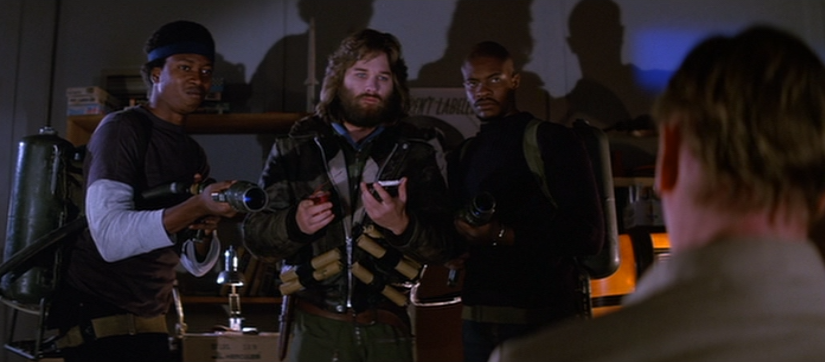
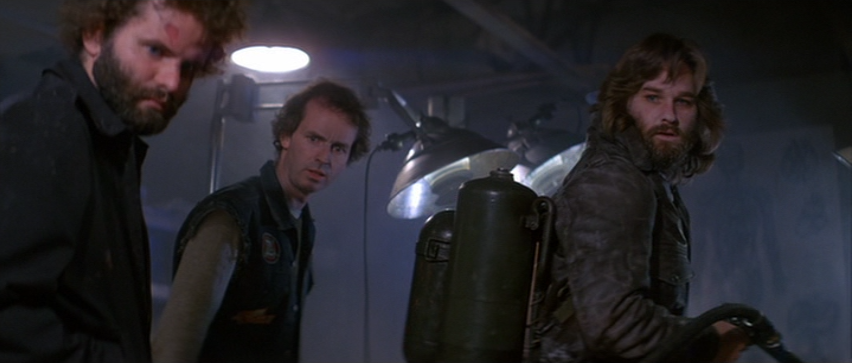
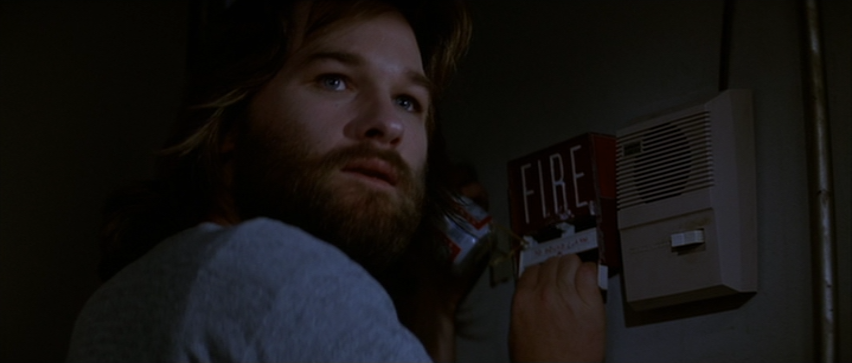
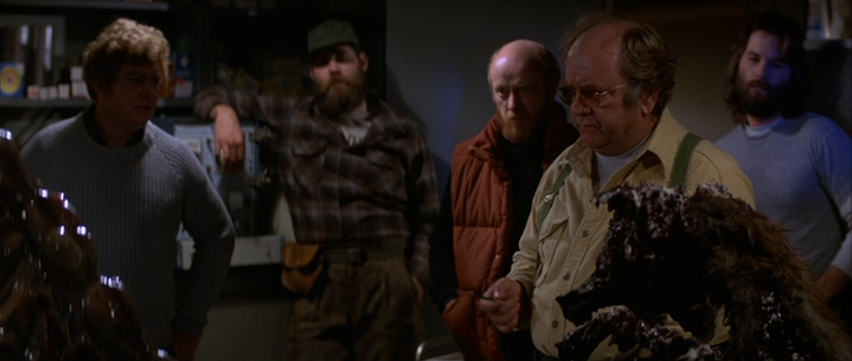

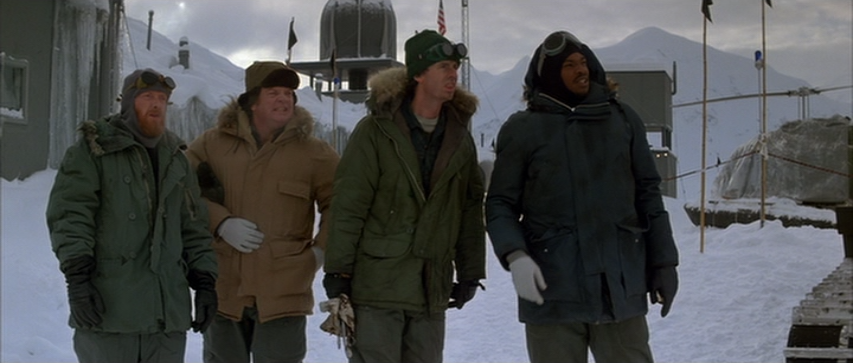

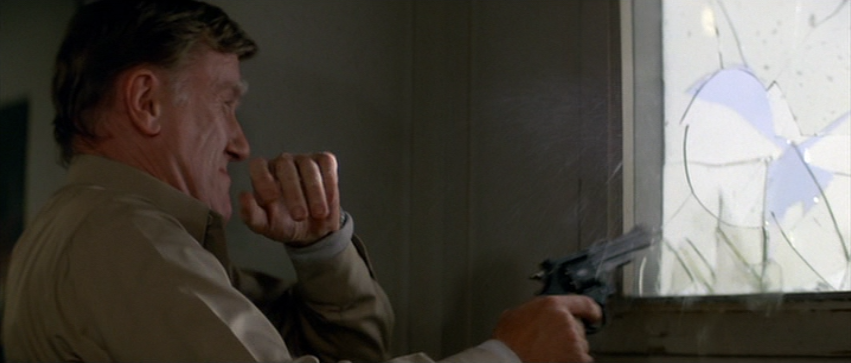
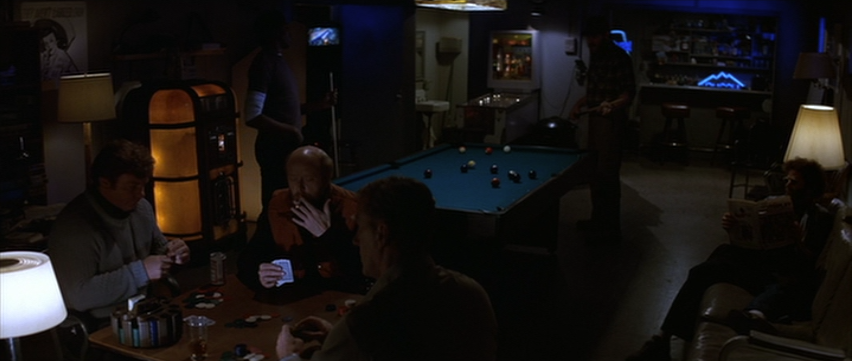
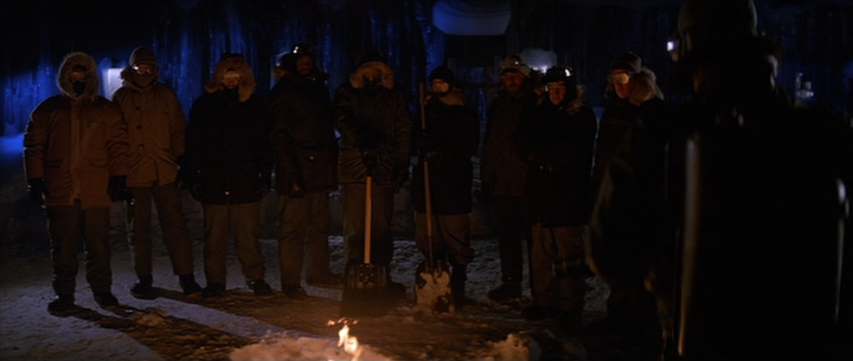
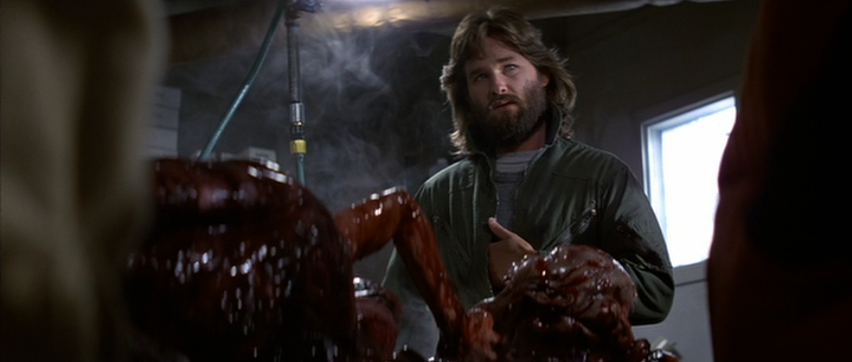
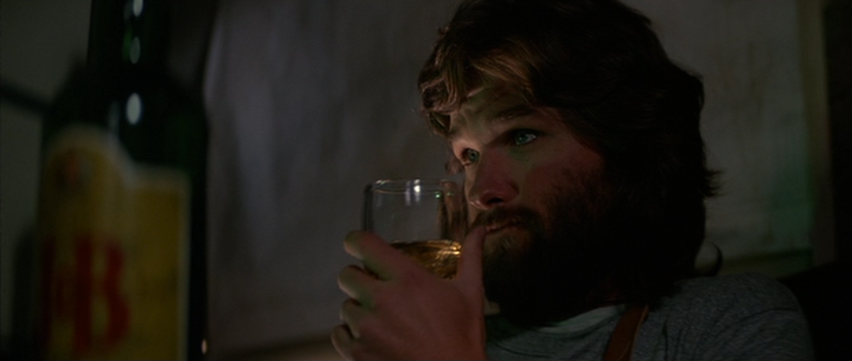
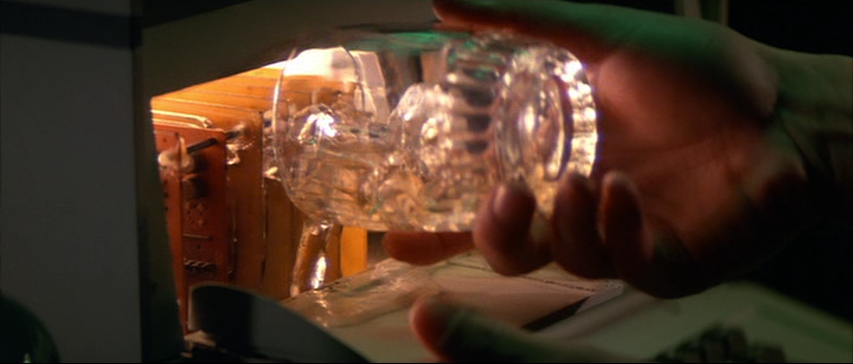
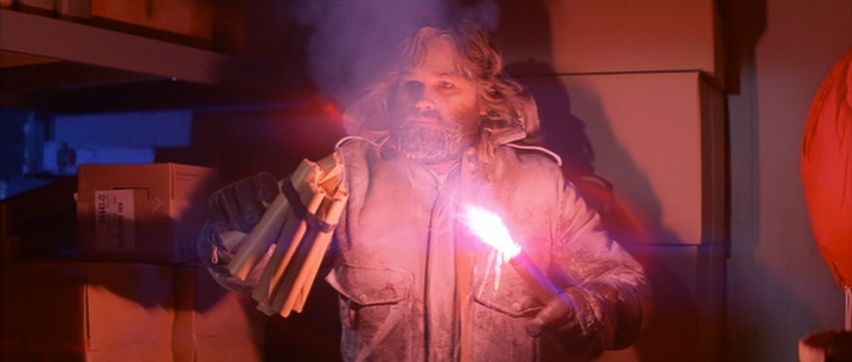
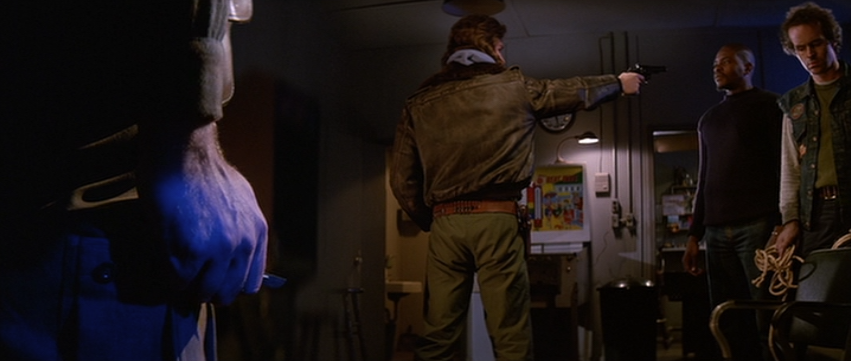
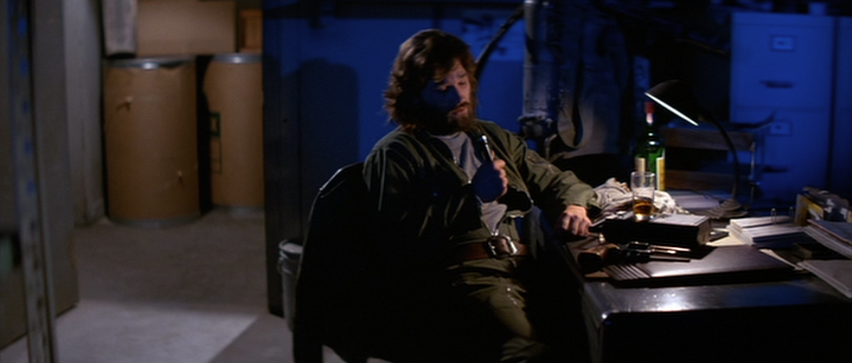
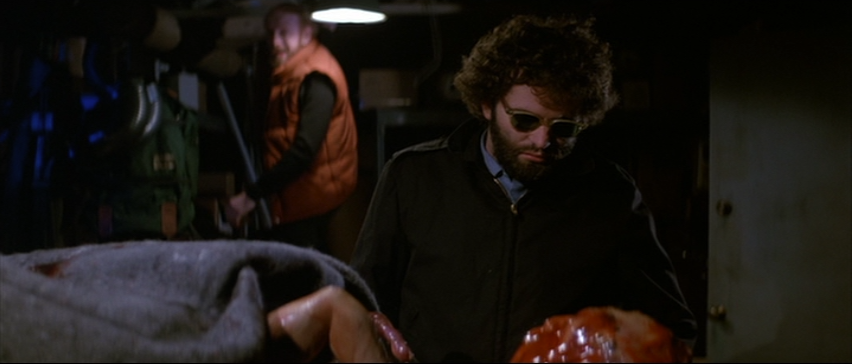
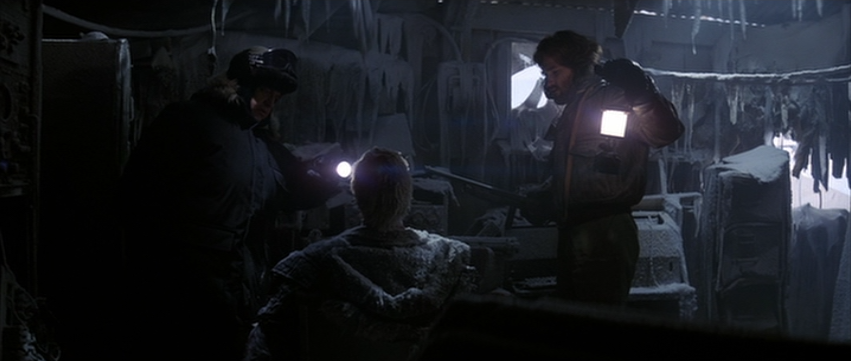
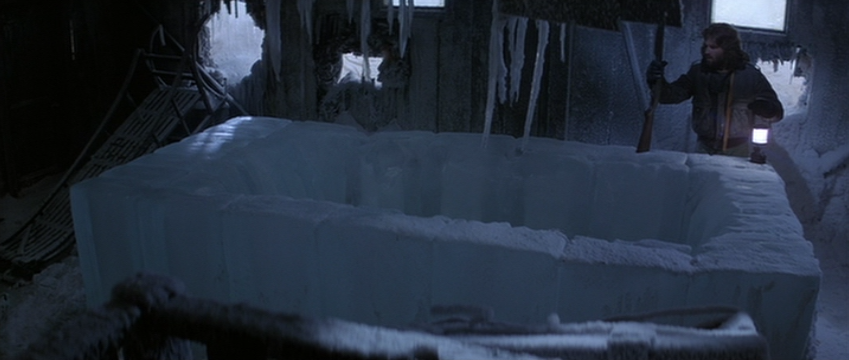
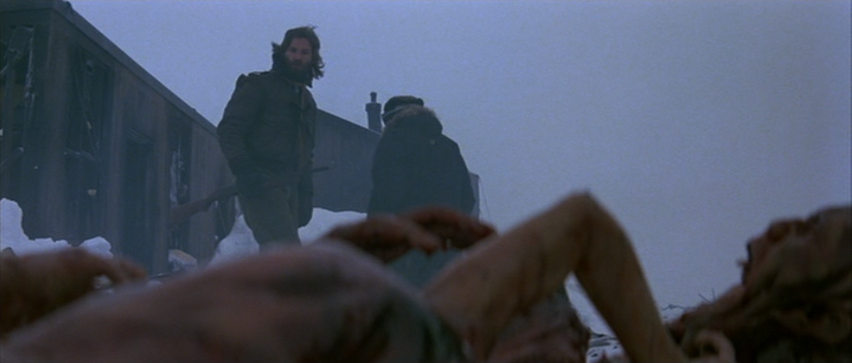
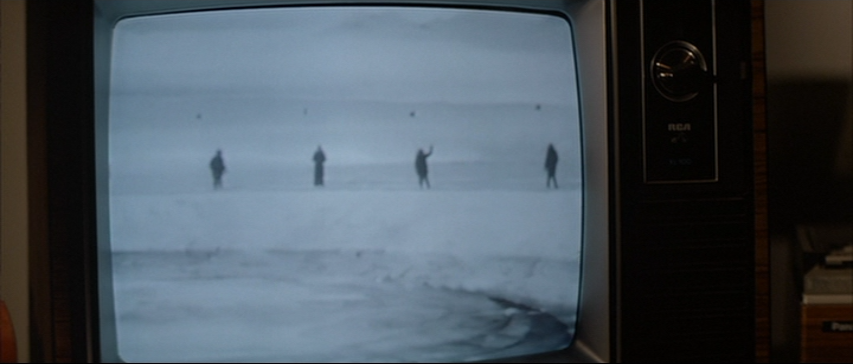
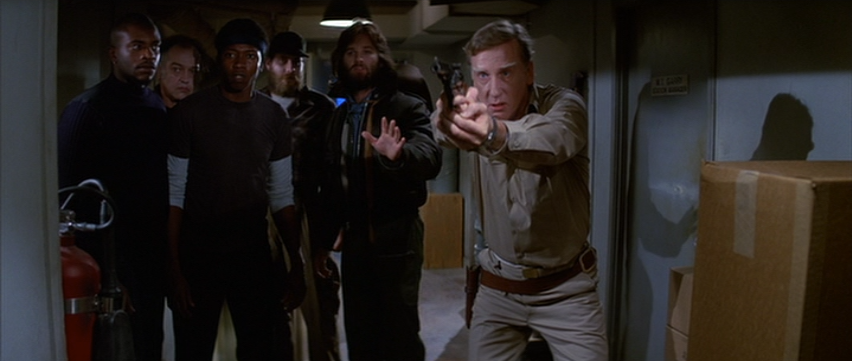
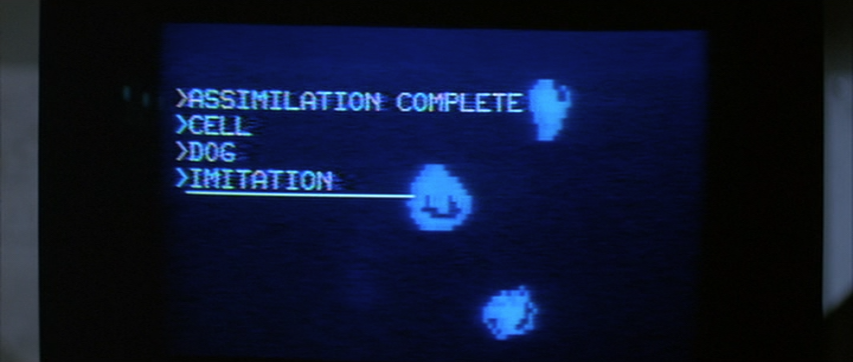

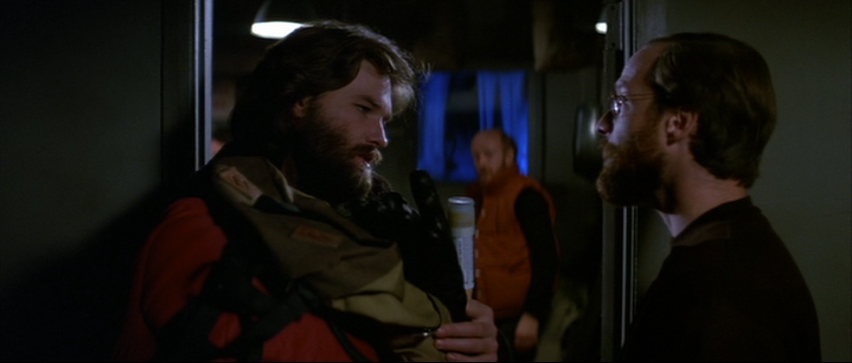
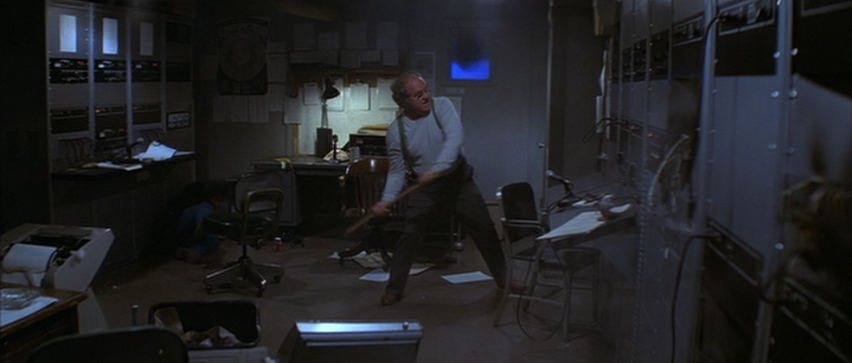
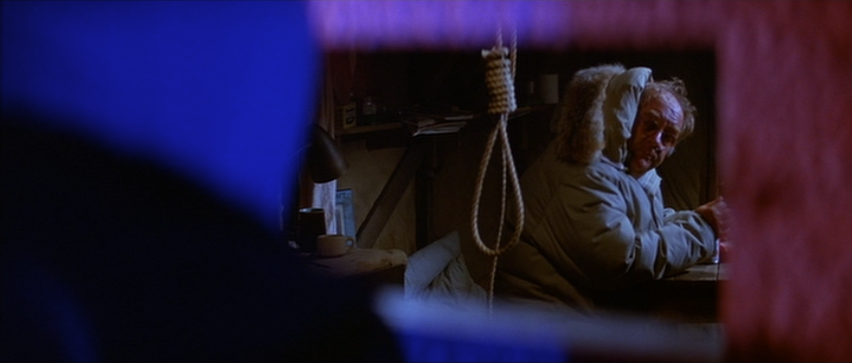
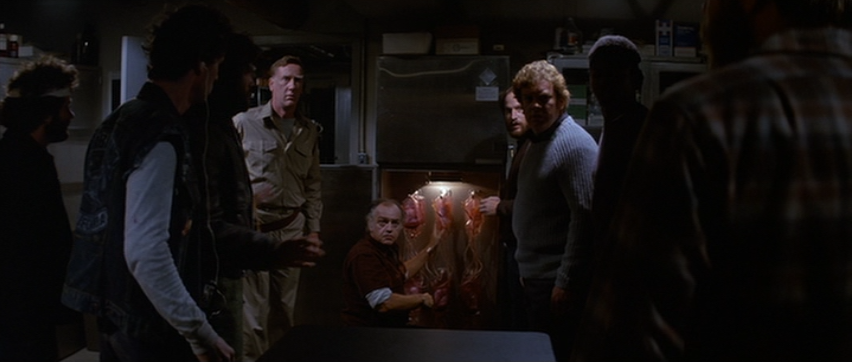
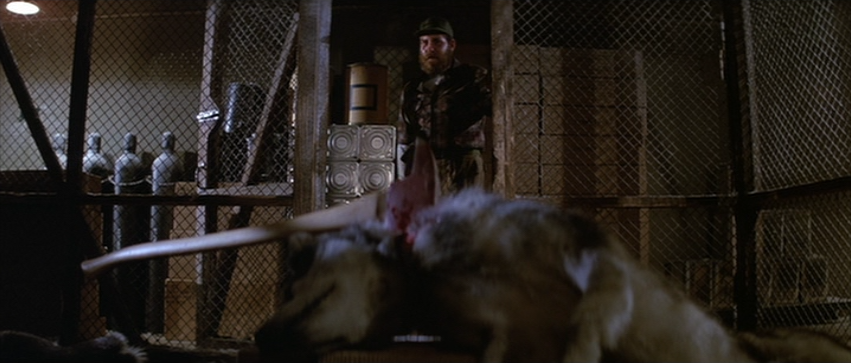
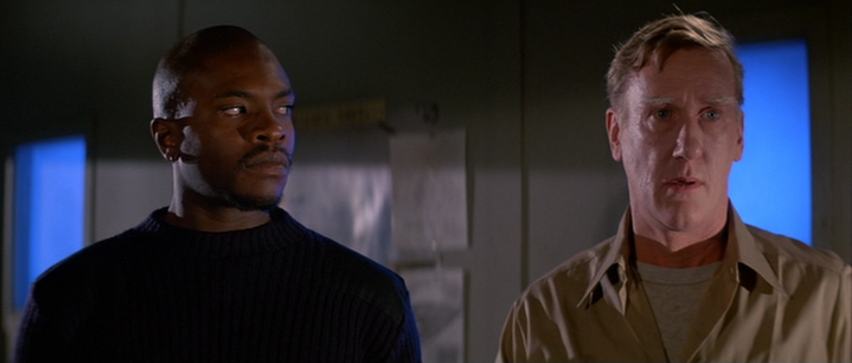
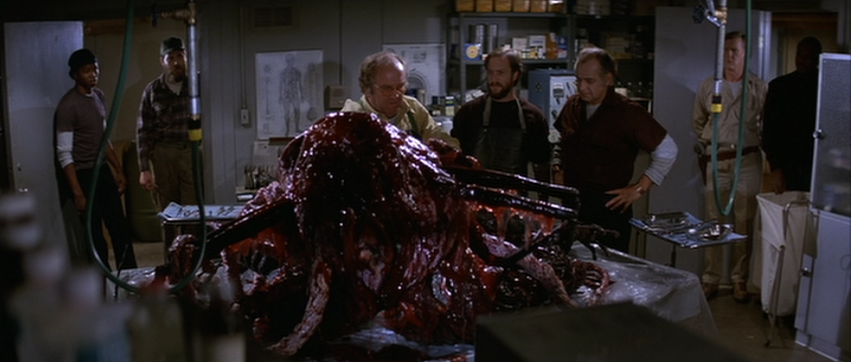
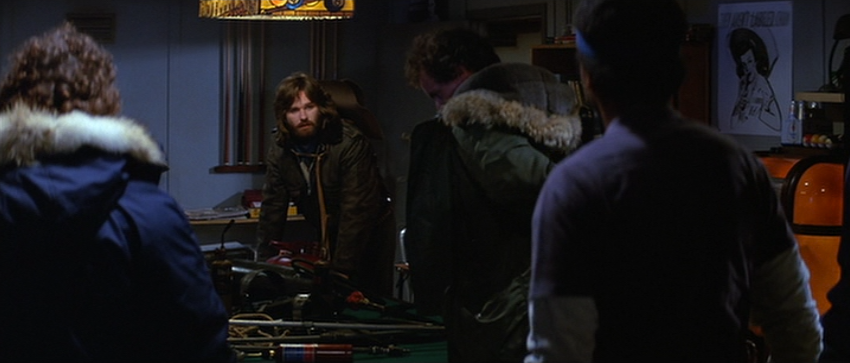
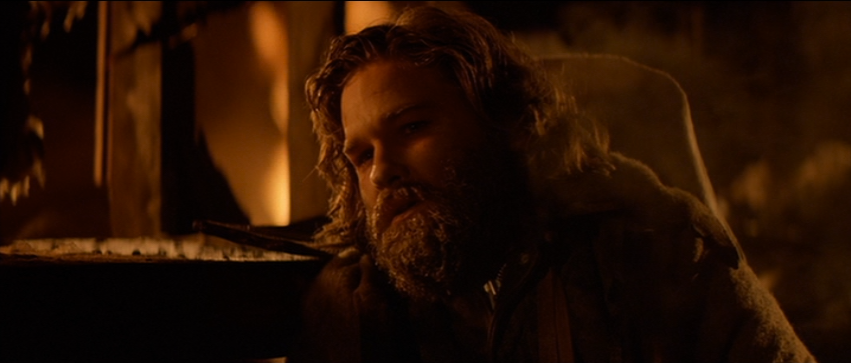
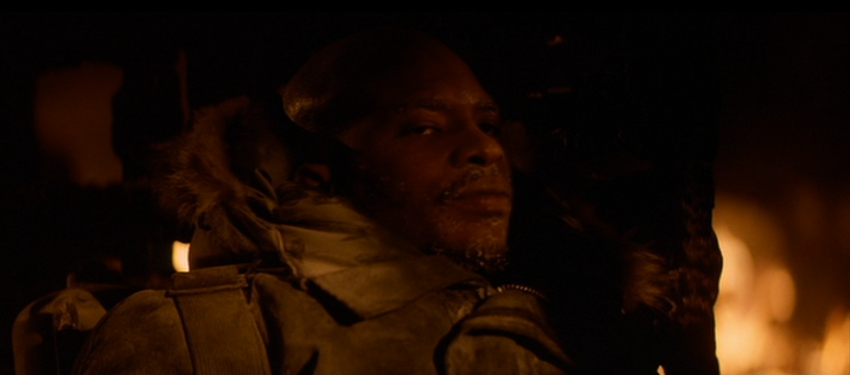
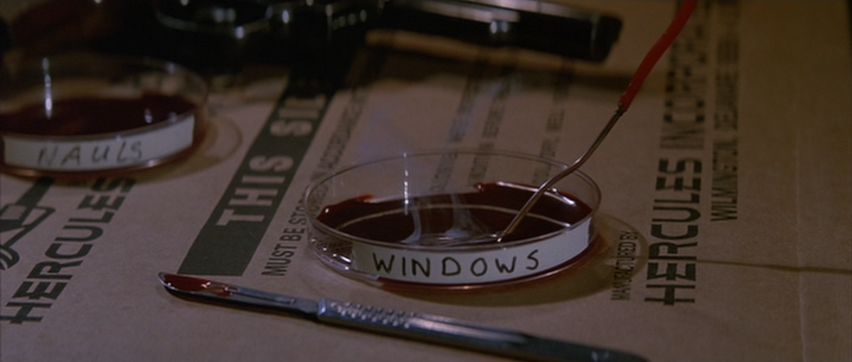
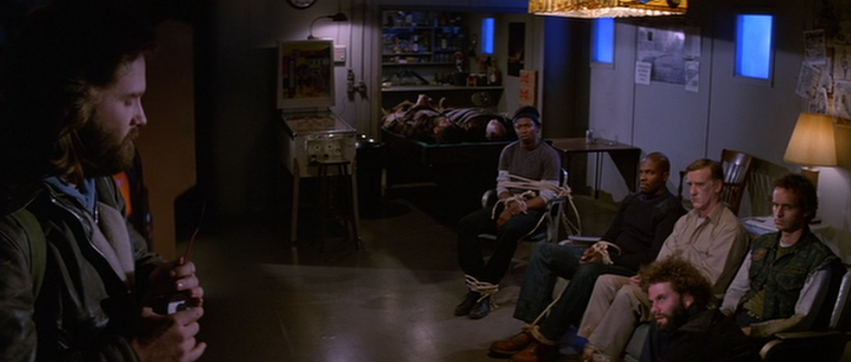
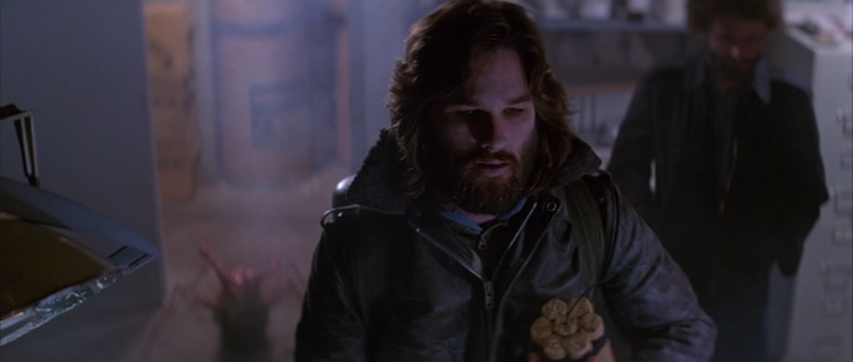
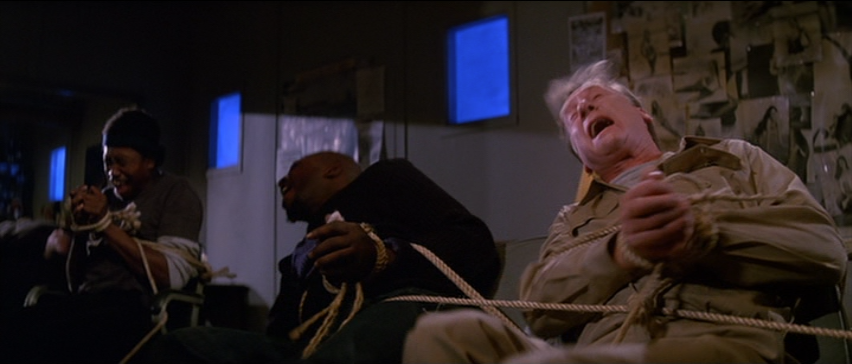

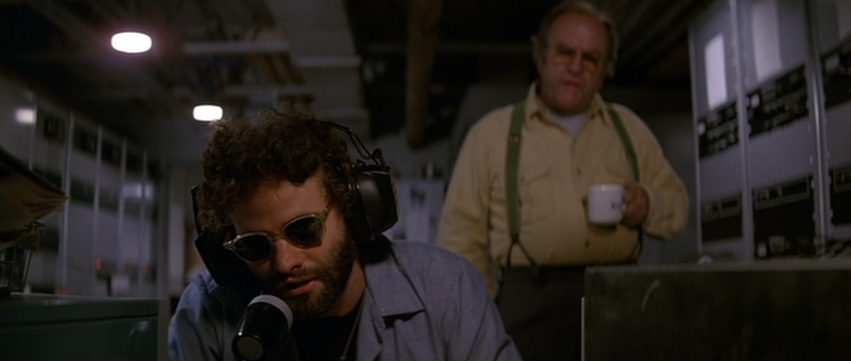
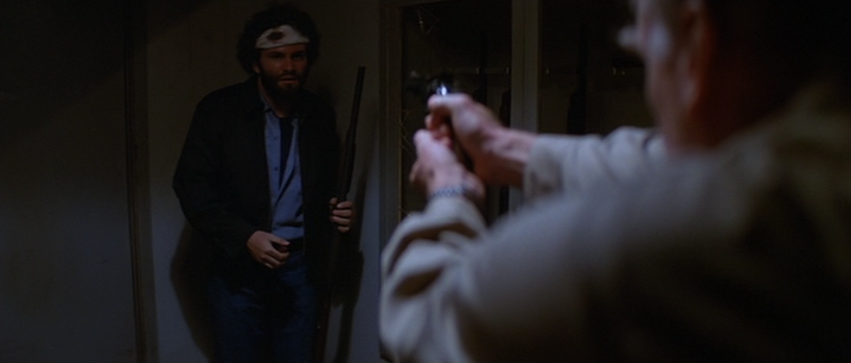
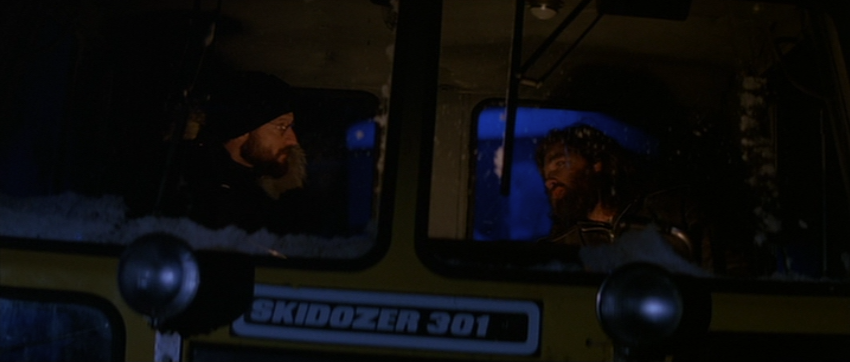
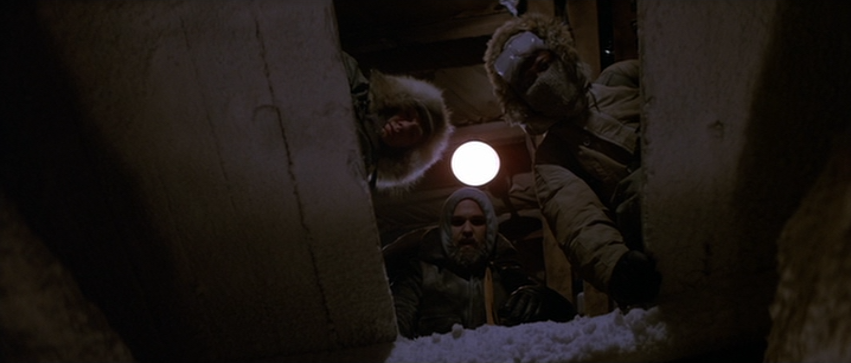
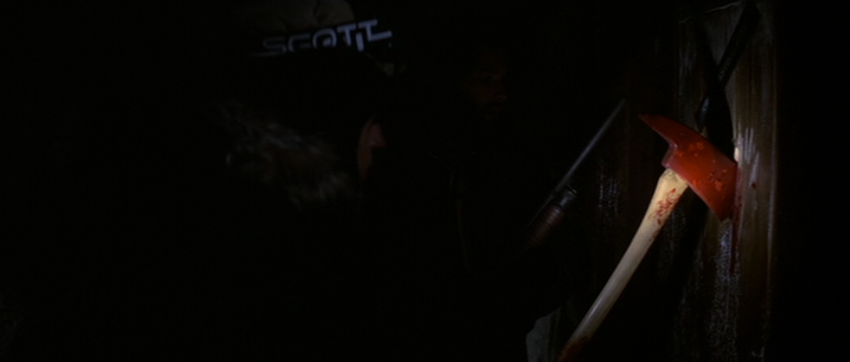
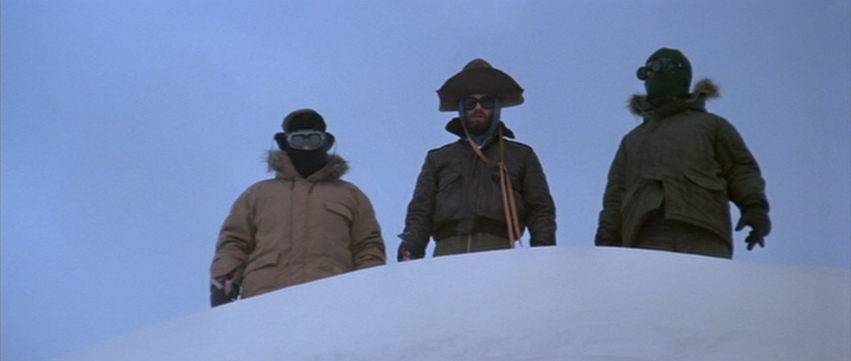
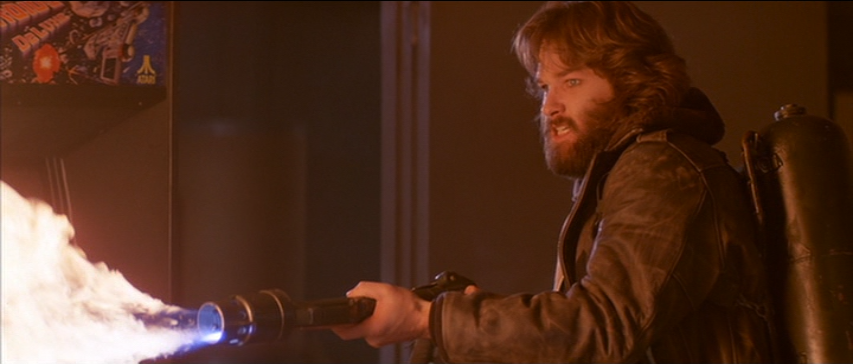
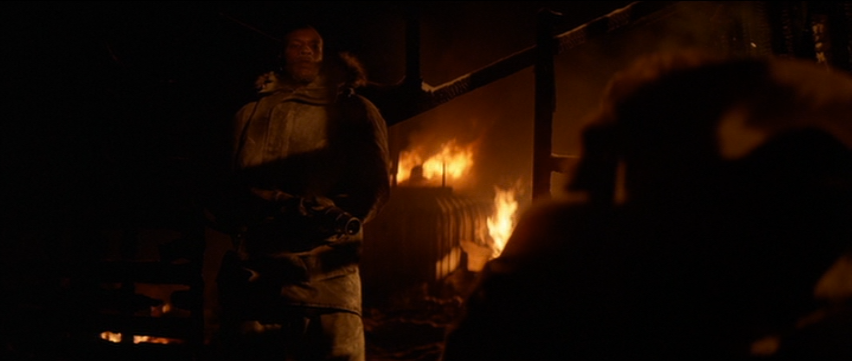
Just wanted to say thanks for taking the time to write this up. I know little about the other two films from this year’s trilogy so I’ll probably watch those before I read about them. Anyways, you write interesting stuff, keep at it and thanks again.